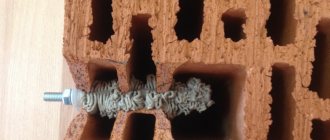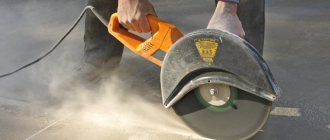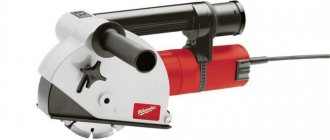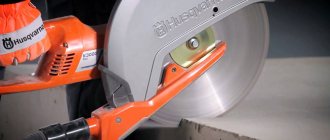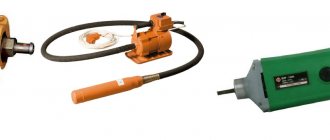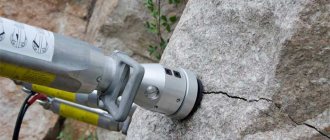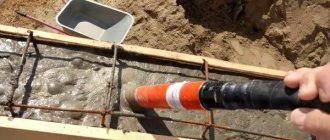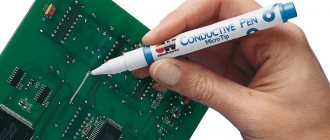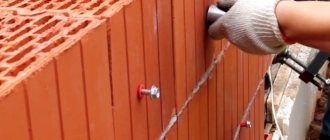During construction work, it becomes necessary to mechanically connect structural elements. Builders and installers do this using dowels made of plastic or metal. Hardware is used with solid stone, brick, and concrete bases. An alternative is chemical anchors. Therefore, builders opt for Hilti glue for anchors, which is produced in Liechtenstein. Products are produced in the form of capsules and injections.
Installation of reinforcement outlets using Hilti chemical anchors
The production of Hilti adhesive anchors is based on epoxy resin and urethane methacrylate. These products are used for fastening mounting and working fittings. The adhesive anchor is selected according to calculations taking into account the following factors:
- load level on the reinforcing bar;
- base temperature;
- depth, diameter and other dimensional characteristics of the embedment.
The technology of reinforcement outlets using Hilti anchors is used in Europe and the Russian Federation. Hilti chemical anchor products can be used to solve various construction and installation problems.
1Technical requirements for base materials
5.1.1 Reinforced concrete and concrete structures into which reinforcing bars are glued must meet the requirements of the relevant regulatory documents and the project in terms of strength, crack resistance, fire resistance and humidity.
5.1.2 This Standard applies to reinforced concrete and concrete structures, the minimum thickness of the elements of which when anchoring (gluing) reinforcing bars into them must be at least 100 mm. If the thickness of the structure is less than 100 mm, the use of technology for gluing reinforcing bars ( Hilti REBAR)
must be justified on the basis of calculations and full-scale tests.
5.1.3 Assessment of the strength and deformation characteristics of the base material must be carried out in accordance with the requirements of current regulatory documents.
5.1.4 When gluing reinforcing bars using the Hilti REBAR
in a concrete (reinforced concrete) base, it is necessary to take into account the strength of the concrete, the degree of crack resistance of the material and the presence of shells and chips.
The above is necessary for the correct selection of the brand of adhesive composition, the geometric characteristics of the reinforcing bars and the depth of their embedding in the base.
5.1.5 On surfaces connected using Hilti REBAR
structural elements should not be damaged, with the exception of surface shrinkage or force cracks, the opening width of which is regulated by SP 52-101-2003
Hilti REBAR technology
recommended for structures made of concrete class no less than B15.
5.1.7 When gluing reinforcing bars using the Hilti REBAR
in reinforced concrete rod structures - crossbars and beams and in flat elements - floor and roof slabs, the following requirements must be taken into account:
— the minimum distances from the edge of the structure to the glued reinforcing bar and between reinforcing bars must be determined in accordance with the instructions of this Standard;
— when installing reinforcing bars in slabs, their design features must be taken into account.
Chemical capsule anchors "Hilti"
This type of Hilti glue for anchors is presented in the form of a capsule. Each capsule is designed for mounting one fastener element. The capsules themselves are represented by cylindrical containers filled with glue. This is a two-component composition, the mixing of which is carried out during installation.
Such products are marked HVU, which indicates:
- depth of permissible mounting hole;
- thread of the anchor stud.
For example, if a product is marked HVU M14X100, then this indicates a hole depth of 100 mm in the base and an anchor pin with M14 thread.
The Liechtenstein company produces chemical anchors for a wide range of threads: from M8 to M39.
The process of installing a stud using such a capsule is approximately as follows:
- First, a hole of the required diameter and depth is drilled in the base. The manufacturing company advises choosing a drill diameter 2-3 mm larger for studs with threads from M8 to M16, and 3-4 mm larger for studs with threads from M20 to M39.
- Then the drilled hole must be cleaned of dust using compressed air or any mechanical method.
- Next, you need to insert the Hilti chemical capsule into the hole.
- After this, you need to screw the pin clockwise into the hole (it will damage the capsule, due to which the components will mix and the solution will begin to harden).
At positive ambient temperatures, the solution will completely harden in about 20-60 minutes. At temperatures around zero or below, it will take several hours to harden. To install metal products that experience severe dynamic loads during operation, it is recommended to use special HVU-TZ capsules.
Rules and features of using anchors
- To work with fastening devices intended for foam concrete and porous materials, a mesh sleeve is proposed, which is placed in a hole drilled in the working base before gluing the parts. It is better to drill with a diamond-tipped tool to obtain a smooth and perfectly round surface. The binder is injected into the sleeve from the tube through a plastic tube until the cavity is filled to two-thirds of the depth. Next, the threaded rod is pressed in and turned, to which the required part will be screwed in the future. After complete hardening, the composition will provide a strong, reliable and durable connection of the fastened elements.
- In any case, the drilled holes should first be cleaned of dust and blown with compressed air.
- A capsule anchor is a glass ampoule filled with an adhesive. One capsule is designed to fix one part. Suitable for installation in solid, dense structures. If such an element is inserted into the prepared hole and the required pin is driven into it with force, then the hardener flows out of the broken container and reacts with the main adhesive. Not recommended for filling large volumes.
- To economically use the contents of the cartridge with the mixture, it is recommended to use a calculator for the required amount of injection mass, which takes into account the diameter of the stud, the depth of the hole and the number of parts to be strengthened. This will significantly reduce installation costs.
- You should not use non-professional devices, such as pharmaceutical enemas, to clean the holes. Also, cavities should not be flushed with water, as this will unnecessarily increase the curing time and reduce the setting effect by up to 80 percent.
Hilti injection anchor systems
Such chemical anchors are marked HIT and are presented in a plastic cartridge with foil containers (one contains glue, the other contains a hardener composition). The Liechtenstein manufacturer Hilti offers a choice of seven types of such anchors. This type of Hilti glue for anchors differs in the following characteristics:
- scope of use;
- glue component and hardener type;
- cartridge volume (330 ml or 500 ml);
- permissible load on the stud.
A striking example of the company’s products from Liechtenstein is HIT-MM-Plus glue, which is the most popular and inexpensive (a 330 ml container costs about 700-1000 rubles). Two-component adhesive made from urethane methacrylate.
The manufacturer recommends using it for mounting studs, the thread of which varies from M6 to M16. Installation is carried out in the following types of bases:
- brick;
- concrete;
- block;
- stone (artificial and natural stone).
The most expensive type of product is HIT-RE-500-V3 glue, the cost of which is about 3,000 rubles. It is used for installation of releases of load-bearing reinforcement elements of floors, foundations, stairs, columns. The glue is made on the basis of epoxy resin with additives, due to which it is capable of holding reinforcement with a diameter of 10 to 55 mm.
Adhesive anchor Hilti HIT-RE-100
This type of Hilti glue for anchors is made on the basis of epoxy resin and hardener, and is two-component (the components are mixed during installation).
Using these products, the following construction and installation work is performed:
- installation of additional metal structural parts;
- installation of load-bearing metal structures (beam, column and other types);
- replacing incorrectly installed reinforcing bars or installing missing reinforcement;
- installation and connection of concrete reinforcement bars.
The Hilti anchor HIT-RE-100 has a wide operating temperature range: from -40 to +70° C. These products can be stored and transported at temperatures from +5 to +25° C. Tools for its installation are: HDM, HDE 500-A22.
Types of HILTI anchors
The unique hybrid chemical composition of anchors of this class makes them indispensable in construction, furniture production, and when performing minor repair work on household items. For each type of application, special, most suitable and easy-to-use polymer formulations have been developed.
- Hilti HIT-RE 500 chemical anchors are used in damp environments, damp concrete, and when installing load-bearing structures. These fasteners are indispensable when working in water.
- HILTI HIT-HI 70 is excellent for fastening parts to hollow (energy-saving) partitions, aerated concrete and other loose materials.
- HFX is suitable for home renovations, fastening household appliances and plumbing elements. It is extremely easy to use and does not require any special skills. It hardens quickly, is injected without a dispenser and allows you to get distracted for a short time if necessary. The degree of hardening is monitored by color changes.
- HIT-ICE works perfectly even at temperatures below -20 degrees Celsius. Dosed easily and quickly.
- HIT-RE 100 is a standard epoxy adhesive used for securing anchors and reinforcement in concrete foundations.
- HIT-HI 200-A is a unique development of a hybrid adhesive for the restoration of anchor connections and reinforcement outlets in critical areas.
- HIT-MM PLUS is an inexpensive and reliable material used for installation in concrete and brick.
Advantages of the Hilti HIT-RE-100 adhesive anchor
When using HIT-RE-100 adhesive for anchors in concrete, consumers can count on the following advantages of this product:
- Possibility of use indoors and outdoors with the base material, regardless of its current state (dried, moistened, filled with moisture, etc.).
- Large selection of additional accessories (metal brushes, electric dispenser, injection pistons).
- High level of efficiency for use in solid concrete foundations without cracks.
- Long curing period, due to which you can make the necessary adjustments during installation.
- Easy to clean, making installation much easier.
The cost of adhesive for anchors in concrete Hilti HIT-RE-100 starts from 1,500 rubles for a 330 ml container.
Advantages and disadvantages of Hilti
In conditions of loose environments, poor accessibility, low temperatures and high humidity, even working in water, Hilti certainly surpasses in its quality and reliability all available analogues of metal fastening devices.
Storage and transportation of capsules and tubes does not involve any inconvenience. An open container of adhesive can be stored for up to one year after initial use. You just need to close it tightly. Lime-sand blocks and products made of cellular concrete are beyond the strength of metal dowels without the use of special labor-intensive technologies, while the use of a chemical anchor allows you to quickly and effectively solve the problem. During sudden changes in temperature conditions, chemical compounds do not create a compressive or expanding effect, which is an additional guarantee of the reliability of the connection.
Disadvantages include the relatively high cost, short shelf life (up to one year) and the length of the hardening period.

